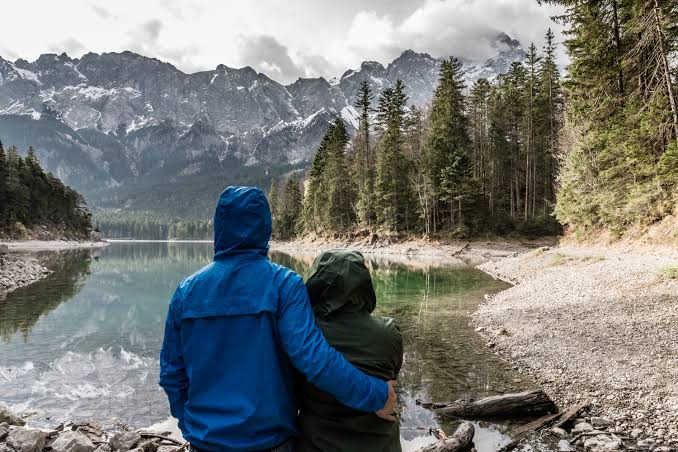Is The Appalachian Trail Dangerous? Should We Hike It Or Not?
During my recent interview with a close friend who embarked on the Appalachian Trail adventure, I gained valuable insights into his experiences and perspectives. His journey was a fascinating tale of challenges, triumphs, and personal growth, offering a unique glimpse into the world of long-distance hiking.

The allure of this iconic footpath was undeniable, but so were the fears about potential dangers that might lie ahead. The questions kept swirling in his head – “Is the Appalachian Trail dangerous? What are the real risks and hazards? Can he hike it safely as a beginner?”
However, he said confidently that many of these fears were products of the imagination rather than grounded in reality.
Is The Appalachian Trail Dangerous?
The most common concerns about the trails are theft and wildlife encounters. While the possibility of theft or encountering unfriendly individuals exists, such occurrences are rare and should not deter one from embarking on this incredible journey. And its best solution is hiking in groups.
And later in this blog, I will tell you the ways that will further eliminate these risks.
The Appalachian Trail, though challenging, is not an insurmountable feat, and with the right preparation and mindset, it is a gratifying and safe experience.
Here are some common concerns that a new hiker faces.
Wildlife
The vastness of the wilderness and stories of encounters with bears and other creatures ignited a sense of trepidation.

However, as he narrated his encounters with deer and the occasional curious squirrel, I could sense how these fears had transformed into moments of appreciation for the wildlife he encountered along the way.
Weather Conditions
One of his most significant worries was related to the trail’s unpredictable weather conditions. He recounted instances of enduring unexpected rain showers and sudden temperature drops in higher elevations.

Despite the challenges, he found solace in preparing for varying weather scenarios, using high-quality rain gear and layers of clothing to adapt to changing conditions. But here the noticeable point is, he went hiking in the Appalachian in the middle weather like spring in March.
Physical Fitness
In the beginning, my friend was concerned about his physical fitness and endurance for long-distance hiking. However, he described how the trail gradually molded him into a stronger and more resilient hiker.

With each passing day, he built his stamina, pushing beyond his perceived limits, and ultimately achieving personal milestones that filled him with a sense of pride and accomplishment.
Gear selection
When asked about his gear selection, he enthusiastically shared his insights. The gear selection process was initially overwhelming, but he found comfort in advice from experienced hikers and the camaraderie of fellow trail enthusiasts.

Through trial and error, he assembled a collection of equipment that suited his needs and contributed to a lighter pack, making the hike more enjoyable.
Hydration
Throughout his hike, he emphasized the importance of staying well-hydrated and nourished. Initially worried about the availability of water and food, he found relief in the trail’s abundance of water sources and the convenience of resupply points in trail towns.

Savoring the simplicity of meals on the trail, he shared tales of hearty backpacking dinners and the joy of indulging in local cuisines during stops in picturesque towns.
Some Common Problems & Their Remedies
But when you are far from your home you should be able to deal with any kind of situation and you should know its remedy. Here are some remedies or solutions to address the problems that hikers may encounter on the Appalachian Trail:
Practice Campsite Security
Hikers should prioritize campsite security to safeguard their belongings. When camping at shelters or designated campsites, it’s essential to keep valuable items within sight or securely stored in closed tents or shelters when not in use.
Expensive gear like backpacks, sleeping bags, and tents should not be left unattended, especially in high-traffic areas. Locks can be used to secure zippers on tents and backpacks, providing an extra layer of protection.
Use Bear-Resistant Containers
The Appalachian Trail is known for its wildlife, including bears that may be attracted to hikers’ food supplies. Proper food storage is essential to prevent bears from accessing food and causing potential damage to campsites.
Bear-resistant containers are specifically designed to deter bears and other animals from opening them. Using these containers ensures hikers don’t lose their food supplies to wildlife and reduces the chances of attracting unwanted attention from other hikers who may be seeking food.
Travel in Groups
Hiking with a group or finding trail companions can enhance safety and provide peace of mind during the journey. There is a sense of security in numbers, and having fellow hikers around means there are more people to watch out for each other.
Forming a trail family or joining hiking groups also creates a sense of camaraderie and support, making the hiking experience more enjoyable and safer.
In case of an emergency or any concerning situation, having others nearby can be crucial for seeking help or assistance.
Trust Your Instincts
Trusting one’s instincts is an important aspect of trail safety. If a hiker encounters someone displaying inappropriate behavior or making them feel uncomfortable, it’s crucial to maintain a safe distance and remove themselves from the situation if necessary.
Ignoring gut feelings can potentially lead to risky encounters or dangerous situations. Hikers should be aware of their surroundings and the behavior of others, especially when venturing into less-traveled or secluded areas of the trail.
Be Discreet with Personal Information
While interacting with locals or other hikers in trail communities, hikers should be cautious about sharing excessive personal information.
While most people on the trail are friendly and supportive, it’s essential to exercise discretion to protect one’s privacy and safety. Avoid sharing specific details about hiking plans, intended campsite locations, or other personal information with strangers.
Striking a balance between camaraderie and cautiousness can contribute to a positive trail experience.
Plan Campsite Locations
Choosing campsite locations carefully is an essential safety consideration. Hikers should opt for established campsites or shelters with some activity rather than camping in isolated or remote areas.
Camping near other hikers provides an added sense of security and increases the likelihood of help or assistance in case of an emergency.
Well-traveled campsites are more likely to have other hikers nearby, reducing the feeling of isolation and potential risks associated with camping alone in remote areas.
Carry Communication Devices
Having a reliable communication device, such as a satellite phone or a personal locator beacon (PLB), is a crucial safety measure. These devices allow hikers to call for help in emergencies or report suspicious activities to authorities.
In case of injury, illness, or any other urgent situation, communication devices facilitate quick and effective rescue operations.
Informing someone you trust about your hiking plans and expected return date adds an extra layer of safety, as they can raise an alarm if you fail to check in as planned.
Keeping safety at the forefront of the hiking experience allows hikers to fully immerse themselves in the beauty and adventure the trail has to offer while ensuring a safe and enjoyable journey.
Conclusion
In conclusion, based on my experiences and the knowledge shared, I can say that hiking the Appalachian Trail is an exhilarating and rewarding adventure, but it does come with its share of challenges and potential risks.


